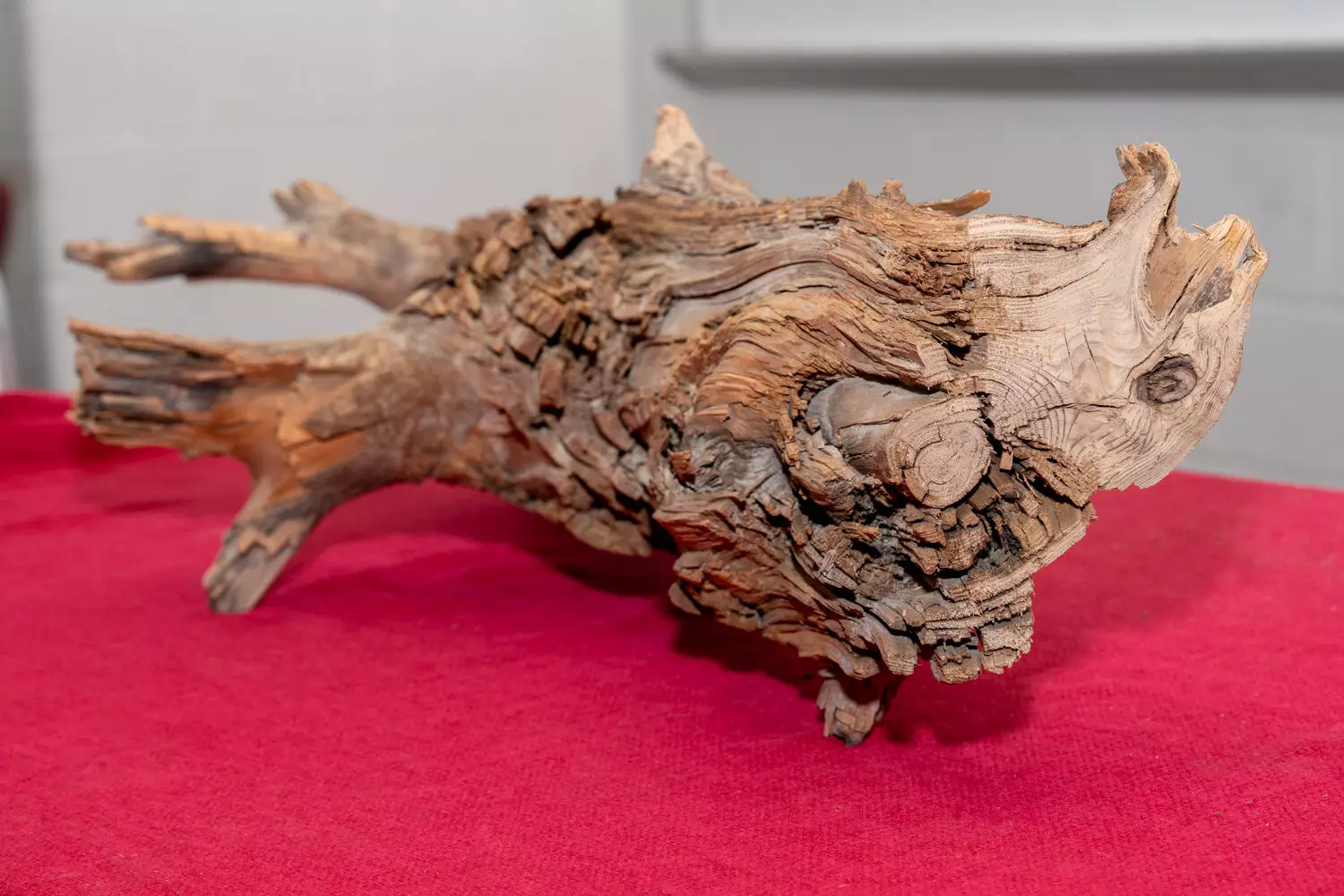Recent research published in the prestigious journal *Science* has unveiled how a seemingly mundane object—a 3,775-year-old log—can offer invaluable insights for addressing one of the most pressing challenges of our time: climate change. Researchers from the University of Maryland, led by Professor Ning Zeng, have delved into this ancient specimen, studying not just the wood itself, but also the soil that enveloped it for millennia. Their findings indicate that the peculiar conditions surrounding this log contributed to its remarkable ability to retain carbon, thereby proposing a novel approach to environmental conservation dubbed “wood vaulting.”
The log in question, discovered in Quebec during a 2013 pilot experiment, has undergone rigorous analysis. The research, which was formally published on September 27, 2024, found that less than 5% of the original carbon dioxide had been released from the wood. This preservation feat can primarily be ascribed to the low permeability of the clay soil in which it lay buried. Unlike more permeable soil types that facilitate oxygen flow and encourage decay, this particular soil type acted as a barrier, effectively keeping decomposing agents such as fungi and insects at bay. Zeng’s comments about the log—a piece that could be used for fine furniture—underscore the exceptional state of preservation.
The implications of this discovery are profound, not only for the scientific community but also for climate policy. By understanding how environmental factors contribute to the preservation of carbon in dead wood, researchers could refine existing carbon sequestration efforts. These findings challenge prior assumptions surrounding wood burial practices and suggest a shift in focus toward optimizing environmental conditions that promote long-term storage of carbon.
Wood vaulting proposes to utilize non-commercial wood products—like trees that have succumbed to disease, or remnants of construction and furniture—in a far-sighted solution to reduce atmospheric carbon dioxide levels. The practice hinges on the idea that, by burying such wood securely, it can be prevented from decomposing, thereby sequestering carbon that would otherwise contribute to greenhouse gas emissions. This is vital because as trees die organic matter can release stored carbon back into the atmosphere, exacerbating global warming.
Zeng emphasizes, however, that successful implementation of wood vaulting isn’t simply a matter of digging a hole and burying wood. Historical context reveals that many buried wooden items throughout human history have not survived the ages; thus, a comprehensive understanding of optimal burial conditions is imperative. This approach necessitates a concerted effort to investigate geological and archaeological factors alongside biological ones, a perspective that Zeng believes has been too frequently neglected in past studies.
The convergence of geology, ecology, and materials science emerges as a cornerstone of this research. Following the initial excavation in Quebec, subsequent studies included carbon dating and microscopic examinations of the log’s structure and properties, revealing critical data about its chemical makeup and resilience. The collaborative efforts between Zeng’s team and researchers from institutions like MAPAQ of Montreal and UMD’s Department of Materials Science and Engineering speak to the interdisciplinary nature of contemporary climate research.
Such teamwork enhances the reliability of findings and informs future endeavors. Discovering that the log’s preservation was significantly influenced by its surrounding environment, notably the low permeability of the clay soil, introduces a practical aspect to wood vaulting initiatives. It suggests that suitable burial conditions could be replicated in various global contexts, ultimately making the strategy accessible and scalable.
As the global community grapples with the escalating impacts of climate change, innovative solutions like wood vaulting are crucial. Zeng and his colleagues view this research not as an isolated breakthrough but as a building block towards a more integrated climate strategy. He acknowledges that while wood vaulting can play a critical role, it must function as part of a broader suite of actions including reducing emissions and enhancing reforestation efforts.
As Zeng continues to refine the principles of wood vaulting, it is evident that this ancient log may serve as a powerful ally in humanity’s fight against climate change. The research encourages a re-evaluation of how we utilize natural materials at our disposal, turning forgotten resources into potential keys for a sustainable future. As more studies develop, the integration of such findings into policy and practice could spell a new era of climate resilience for generations to come.


Leave a Reply